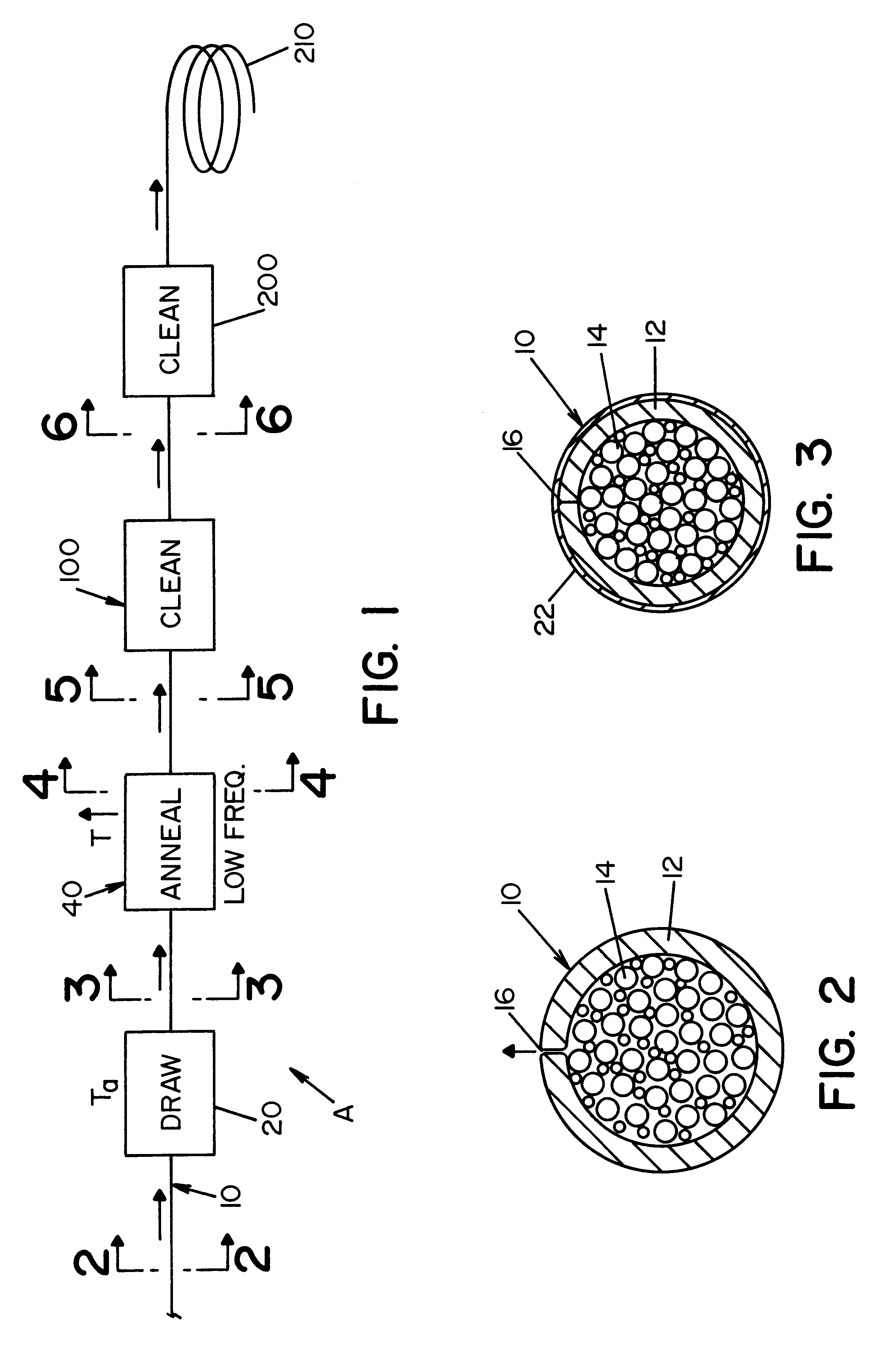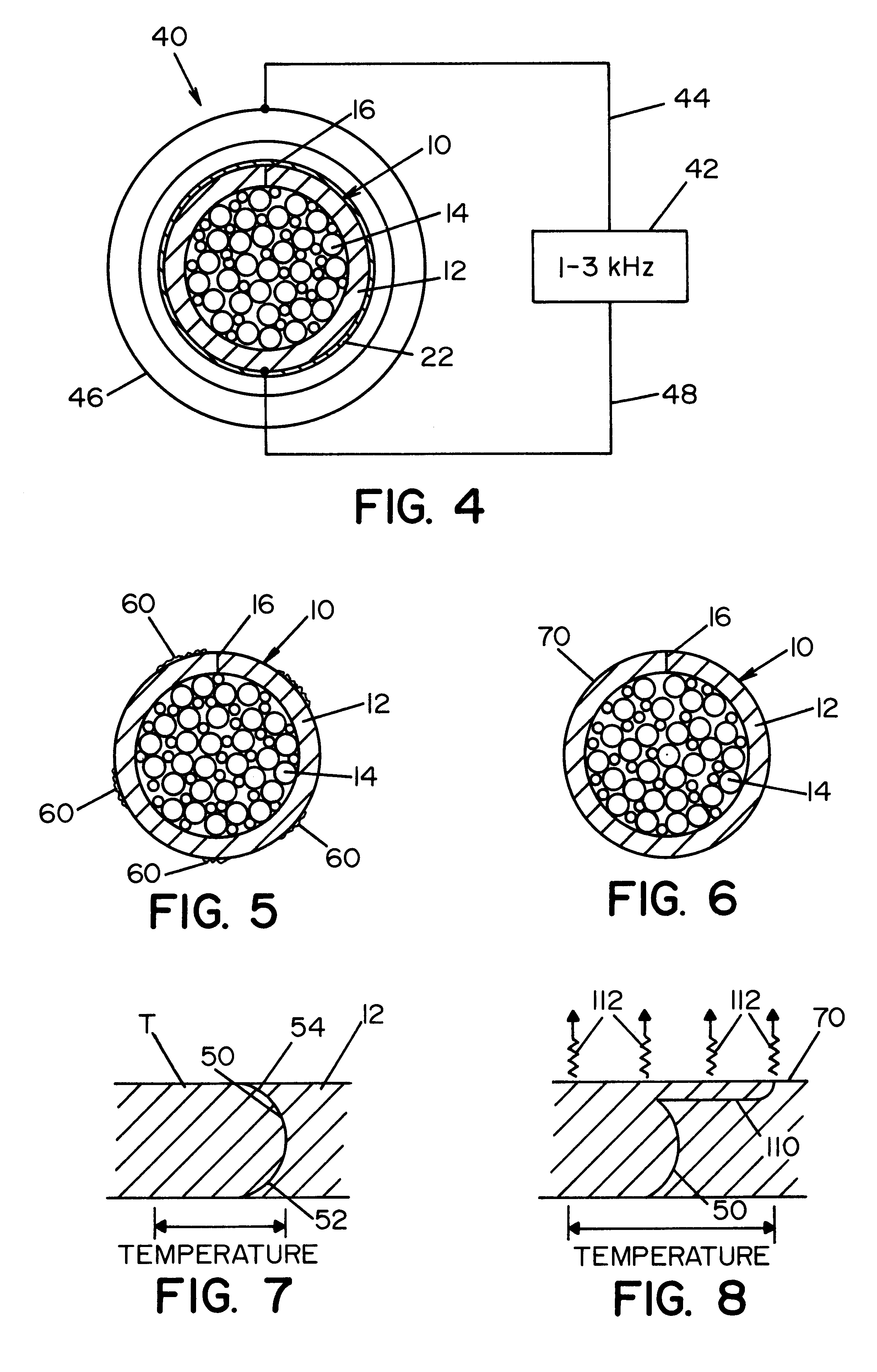Cleaning device for welding wire and method of cleaning welding wire
a cleaning device and wire technology, applied in the direction of heat treatment equipment, soldering equipment, furnaces, etc., can solve the problems of contaminated outer surface of wire, high cost, complicated and expensive techniques, etc., and achieve the effect of removing surface impurities
- Summary
- Abstract
- Description
- Claims
- Application Information
AI Technical Summary
Benefits of technology
Problems solved by technology
Method used
Image
Examples
Embodiment Construction
Referring now to the drawings, wherein the showings are for the purpose of illustrating a preferred embodiment of the invention only and not for the purpose of limiting the same, FIG. 1 schematically illustrates a welding wire manufacturing line A for manufacturing a welding wire 10 having an outer sheath 12 and an inner core 14 filled with particles, such as flux and alloy particles, together with a small amount of entrapped gases. The processing of wire 10 includes formation of a surface joint 16, which is illustrated as a butt joint; however, in practice it is normally an overlap joint. Wire 10 as illustrated in FIG. 2 is formed in accordance with standard practice with a small amount of impurities protruding from joint 16. As the wire moves along the manufacturing line, it moves through drawing die 20 where the wire is drawn to the desired size. Two or more drawing dies may be needed to reduce the incoming welding wire to the desired final size. This drawing operation elevates t...
PUM
| Property | Measurement | Unit |
|---|---|---|
| AC frequency | aaaaa | aaaaa |
| frequency | aaaaa | aaaaa |
| frequency | aaaaa | aaaaa |
Abstract
Description
Claims
Application Information
 Login to View More
Login to View More - R&D
- Intellectual Property
- Life Sciences
- Materials
- Tech Scout
- Unparalleled Data Quality
- Higher Quality Content
- 60% Fewer Hallucinations
Browse by: Latest US Patents, China's latest patents, Technical Efficacy Thesaurus, Application Domain, Technology Topic, Popular Technical Reports.
© 2025 PatSnap. All rights reserved.Legal|Privacy policy|Modern Slavery Act Transparency Statement|Sitemap|About US| Contact US: help@patsnap.com



